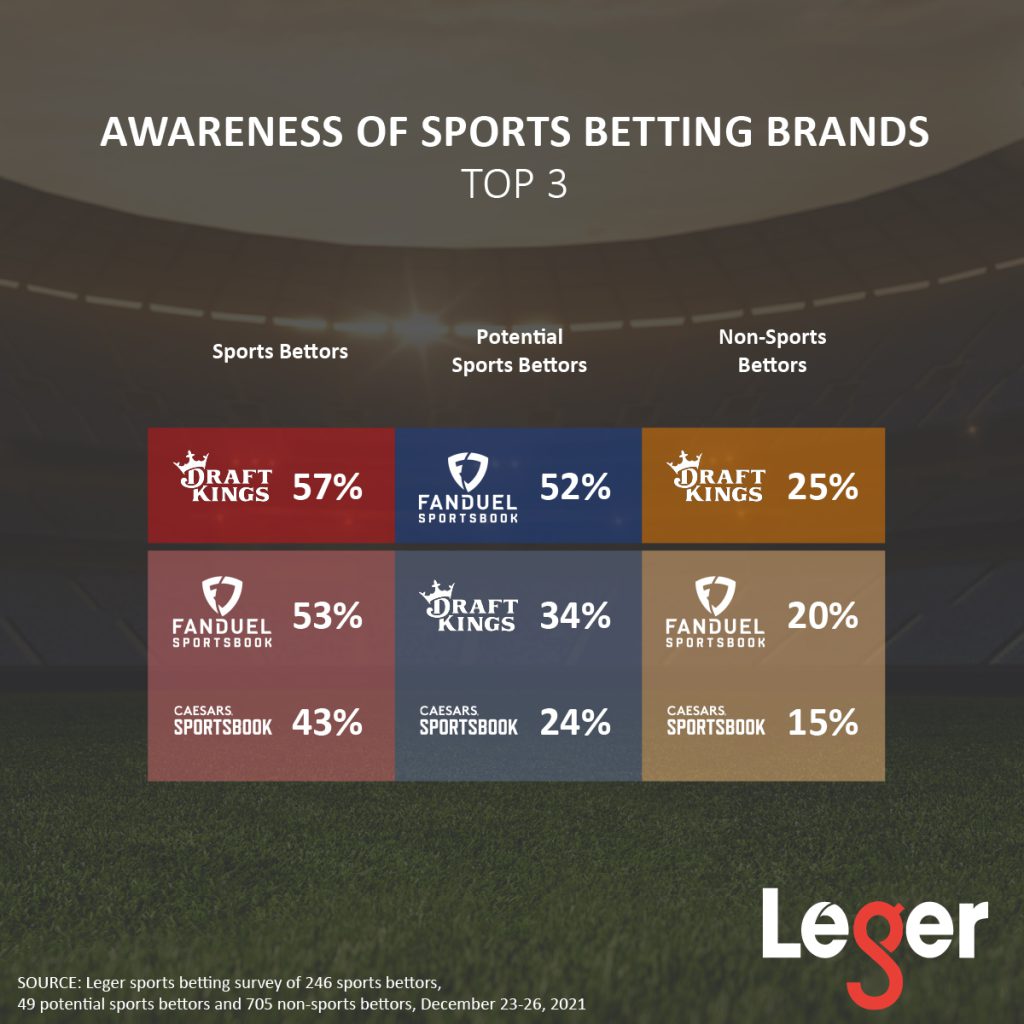Sports betting is rapidly increasing in popularity in the United States: the industry has grown to be worth tens of billions of dollars, and future growth is expected. To delve deeper into Americans’ sports betting awareness and behaviours, Leger conducted two large-scale surveys of 1,000 Americans.
We analyzed the findings based on several variables, including demographics; whether sports betting is legal in respondents’ states; whether they self-identify as sports bettors, potential bettors or non-bettors; and more.
Our free report includes valuable insights about the following information areas:
- awareness of over 30 sports betting brands
- sports betting frequency, habits, methods
- the sports bet on most often
- the sports most favoured to watch
- the sports bet on within the last year
- the most important factors when selecting a sports betting website/app to bet with
- and more
SOME OF THE KEY HIGHLIGHTS OF OUR SPORTS BETTING REPORT INCLUDE…
- Fan Duel has the highest brand awareness among potential sports bettors, at 52%.
- One-quarter of sports bettors bet more frequently now, compared to a year ago.
- 22% of sports bettors plan to sign up for another sports betting account in 2022. This is significantly higher among past month sports bettors, at 54%.
- Nearly one-third of past month sports bettors have placed an in-game bet.
- 91% of Americans who have ever bet on sports watch at least some of the game they bet on, while 40% watch the whole game.
- Awareness of sports betting advertising grew significantly in 2022 among American women, up from 12% to 22% post-Super Bowl LVI.

SURVEY METHODOLOGY
- Two surveys were conducted with a representative sample of 1,000 Americans, over the age of 18, selected from Leger’s LEO panel.
- Data collection took place from December 23, 2021 to December 26, 2021, and February 18, 2022 to February 20, 2022.
- Using 2010 U.S. Census reference variables, the American data was weighted by our statisticians according to gender, age, region, race/ethnicity, household size and education level in order to render a representative sample of the general population.
- A margin of error cannot be associated with a non-probability sample in a panel survey. For comparison purposes, a probability sample of this size would have a margin of error of ±3.09%, 19 times out of 20.



